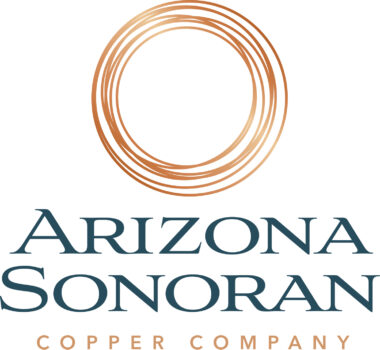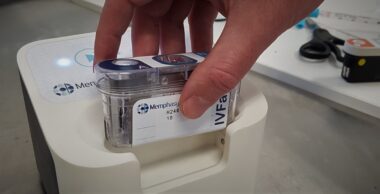News Hub
The latest breaking stories
Access up-to-date news and information on a wide range of press releases including business, finance, technology, healthcare, entertainment, and more.
Discover the most important & comprehensive stories delivered directly to you daily.
- Travel Tourism
- 30/12/2025
- 01:40
HKTB’s Hong Kong New Year Countdown to Present a Spectacular Music and Light Show Across Central Landmarks
Locals and Visitors Invited to Join Across Multiple Platforms with the Launch of Countdown Live Zones and Online Broadcasts to Share Wishes Worldwide(HKTB provides satellite live feed and social media livestreaming of countdown in Central. Details on pages 3-5)HONG KONG, Dec. 29, 2025 (GLOBE NEWSWIRE) -- On New Year’s Eve, the Hong Kong Tourism Board (HKTB) will usher in 2026 with a brand-new edition of the Hong Kong New Year Countdown at the Chater Road Pedestrian Precinct in Central. Themed “New Hopes, New Beginnings,” the show will feature a blend of live music and a light show. Headlining the star-studded line-up…
- Information Technology
- 30/12/2025
- 00:10
Datavault AI Inc. Announces Proposed Dividend of Warrants
Record date for the proposed dividend of warrants will be on Jan. 7, 2026The warrants are expected to have a striking price of $5.00 per share of Datavault AI common stock (subject to adjustment for recapitalizations, stock splits, stock dividends and similar types of transactions)Each eligible participant is expected to be entitled to receive one (1) warrant to purchase one (1) share of Datavault AI common stock for every sixty (60) shares of Datavault AI common stock owned by such participant and is required to open a wallet with Datavault.PHILADELPHIA, Dec. 29, 2025 (GLOBE NEWSWIRE) -- Datavault AI Inc. (“Datavault…


- Agriculture Farming Rural
- 29/12/2025
- 22:41
Arizona Sonoran Provides Update on Nuton Option to Joint Venture
CASA GRANDE, Ariz. & TORONTO–BUSINESS WIRE– Arizona Sonoran Copper Company Inc. (TSX:ASCU | OTCQX:ASCUF) (“ASCU” or the “Company”) today announces that, following preliminary consultation,…
- Contains:
- Information Technology
- 29/12/2025
- 22:10
Datavault AI Inc. Announces Board Approval of Dividend of Dream Bowl Meme Coin II to All Eligible Record Equity Holders of Datavault AI
Innovative Dream Bowl Meme Coin II’s NFL Alumni Health addition will Commemorate the World’s First AI Powered Tokenized Bowl GamePHILADELPHIA, Dec. 29, 2025 (GLOBE NEWSWIRE) -- Datavault AI Inc. (“Datavault AI” or the “Company”) (NASDAQ: DVLT), a leader in data monetization, credentialing, and digital engagement technologies, today announced two major developments to enhance and elevate the profile of Dream Bowl XIV, scheduled for Jan. 11, 2026, at AT&T Stadium, of which the Company is a licensing partner and co-sponsor.First, Datavault AI, in collaboration with Dream Bowl XIV and NFL Alumni Health, proudly announces a strategic partnership supporting the launch of…


- Entertainment
- 29/12/2025
- 13:05
Christmas and Boxing Day crowds deliver major box office boost for HOYTS
Key Facts: Australian audiences flocked to cinemas over the Christmas and Boxing Day extendedweekend, delivering a major festive box office boost, with the total…
- Contains:
- Local Government, Political
- 29/12/2025
- 12:03
Council Delays Put Hundreds of Low-Cost Homes and NDIS facilities for the Hunter at Risk
Hundreds of urgently needed low-cost homes in the Hunter region are at risk after prolonged delays and infrastructure demands imposed by Muswellbrook Shire Council pushed a major residential project to the brink of commercial unviability. OIA Group says its $50 million Denman Park Estate — designed to deliver affordable housing for families, workers and vulnerable residents — has been stalled for more than two years, threatening not only the project itself but a pipeline of adjoining developments that depend on its core infrastructure. The Denman Park Estate comprises around 200 homes, priced to meet strong demand for lower-cost housing in…


- Business Company News, Medical Health Aged Care
- 29/12/2025
- 11:19
Memphasys Secures CE Mark Approval for Felix(TM) System, Marking Commercial Inflection Point and Activating Global Growth Strategy
HIGHLIGHTS CE Mark approval achieved for the Felix™ System under EU MDR, unlocking full commercial deployment across Europe and other CE-recognised international markets. Immediate…
- Contains:


- Community, Entertainment
- 29/12/2025
- 11:00
Sydney unites to farewell 2025
Teams around the harbour are putting the final touches on Sydney’s world-famous New Year’s Eve spectacular as the city comes together to ring in…
- Contains:


- Education Training, Employment Relations
- 29/12/2025
- 10:34
Half of Australian workers open to career change in 2026 as demand for new skills grows
Key Facts: 56% of Australian workers would consider changing jobs in 2026 for better lifestyle outcomes, rising to 62% among Gen Z Labour market…
- Contains:
Media Outreach made fast, easy, simple.
Feature your press release on Medianet's News Hub every time you distribute with Medianet. Pay per release or save with a subscription.

